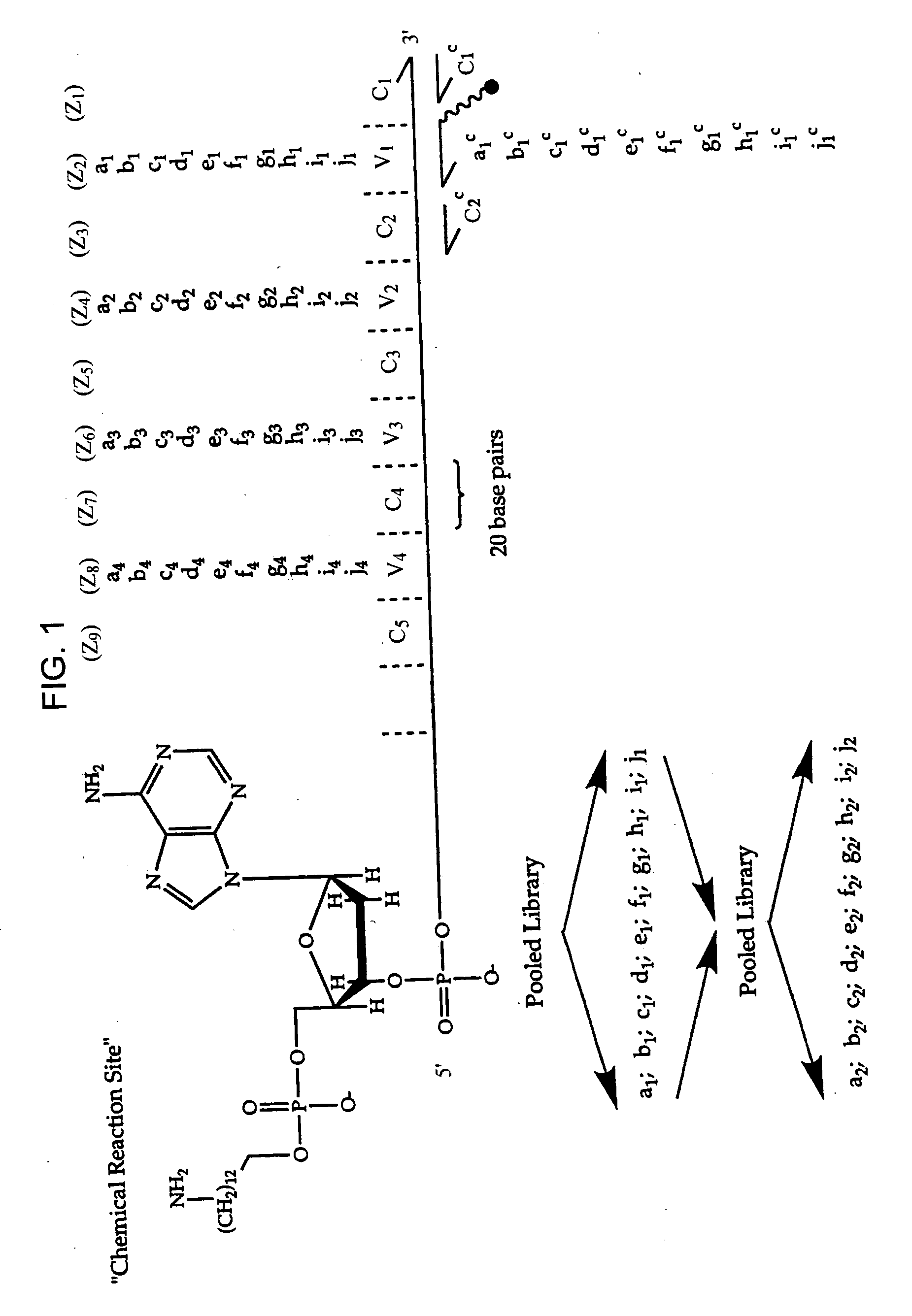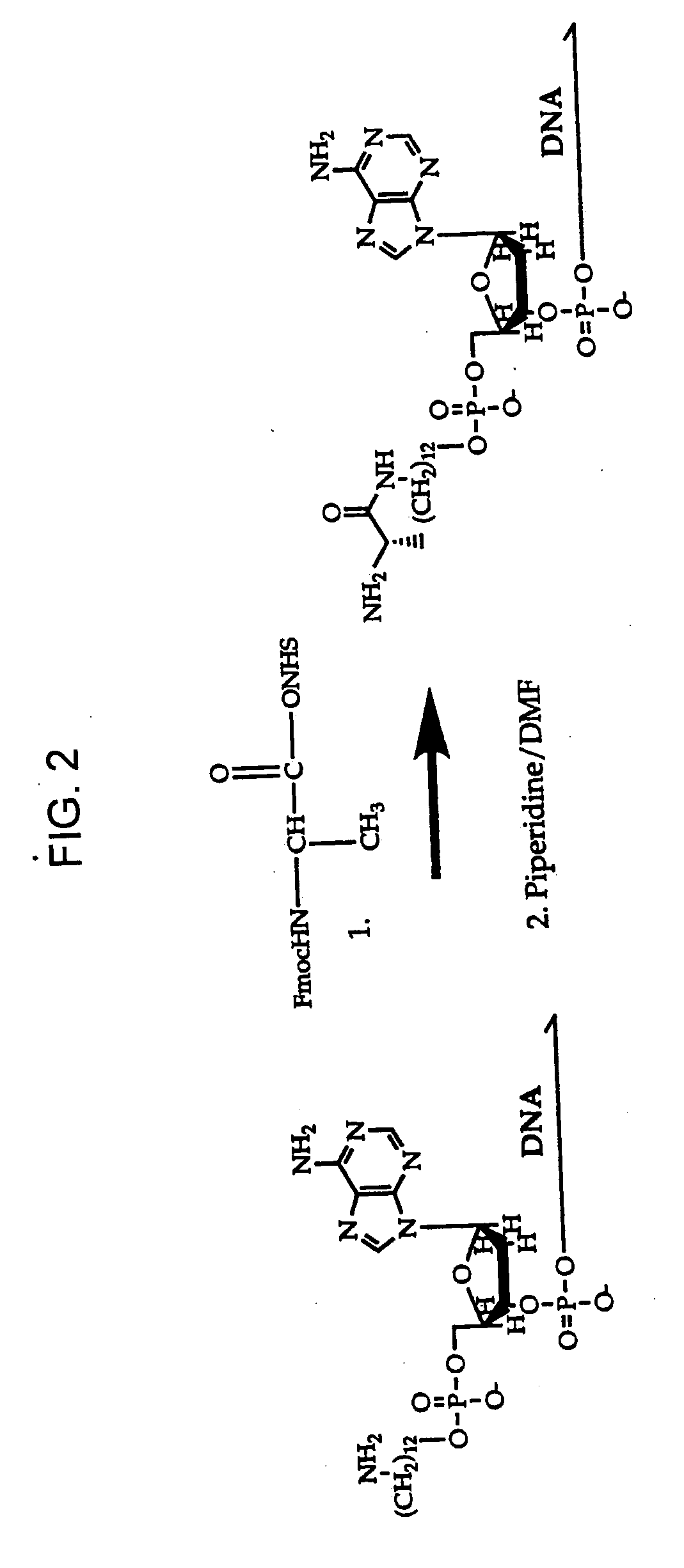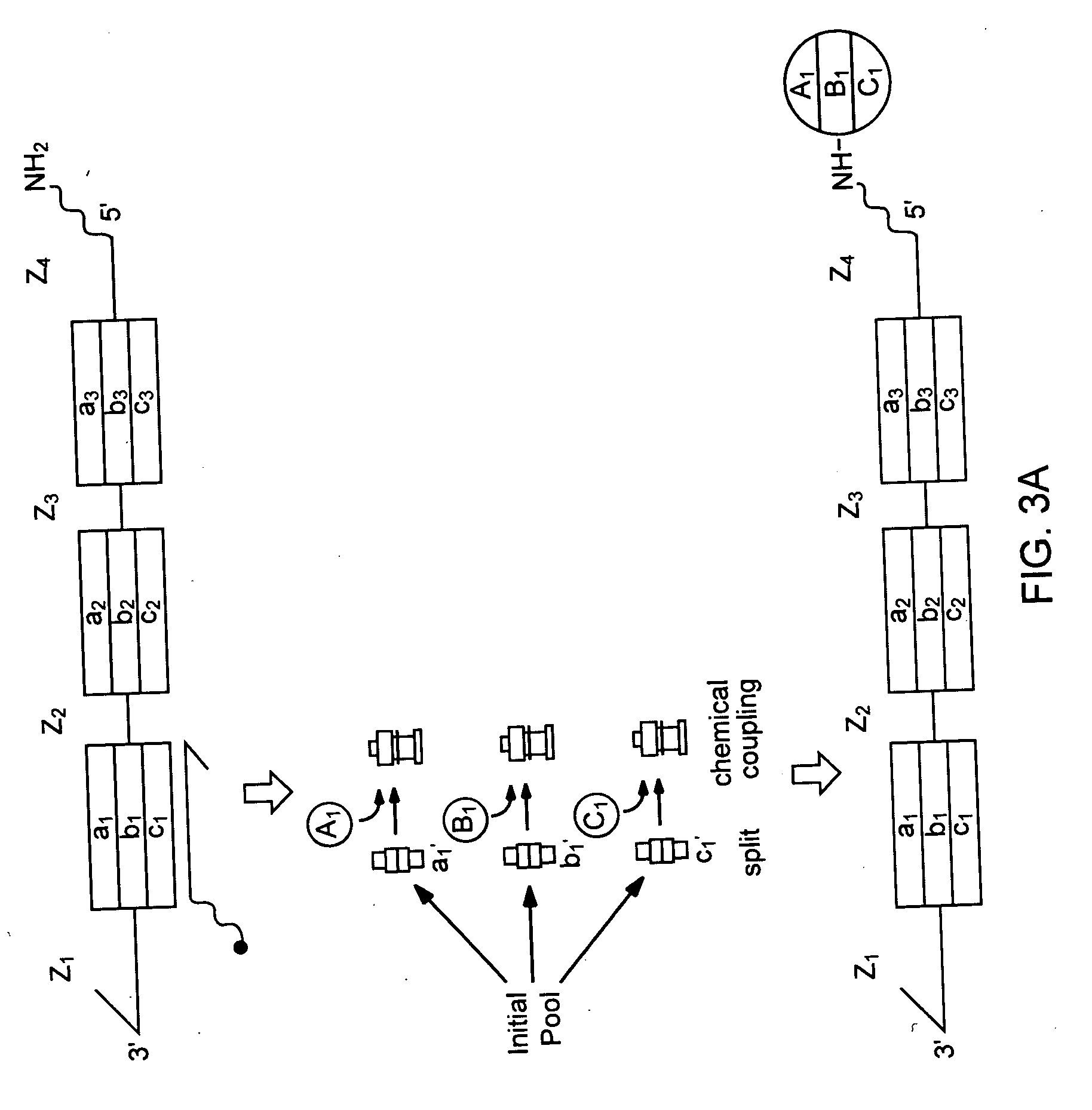DNA-templated combinatorial library device and method for use
a combinatorial library and dna-templated technology, applied in the field of dna-templated combinatorial library devices and methods for use, can solve the problems of inability to meet the requirements of a large infrastructure, slow process, and inability to meet the requirements of a large number of users
- Summary
- Abstract
- Description
- Claims
- Application Information
AI Technical Summary
Benefits of technology
Problems solved by technology
Method used
Image
Examples
example 1
Preparation of Gasketed Patterns on Filters
[0106] The gaskets are made by photocuring a form-in-place elastomeric gasketing material, which is initially a resin. The resin is cured by illumination with ultraviolet light passing through a mask in contact with the membrane. Resin behind the dark areas of the mask (the 384 wells) remains a liquid, and is removed with acetone.
[0107] A mask of an array of 3 mm diameter holes at 4.5 mm spacing is drawn using Adobe Illustrator and printed on a transparency using a black-and-white laser printer. The mask is placed on top of the filter, and both are then placed under an Oriel 500 W mercury arc lamp UV source. The filter is then exposed for 15 sec at 500 W. The mask is removed from the filter, and the unpolymerized excess is washed out of the wells using acetone.
example 2
Preparation of Chemical Conjugation Filter
[0108] A 4.25 cm diameter Whatman GF / D glass-fiber filter is soaked in 1.5 ml of Norland Optical Adhesive 74 or 81 or EMI EMCAST 1852 clear and cured under a 500W UV light source for 15-30 seconds, to produce the gasket pattern on the filter. The unpolymerized material is removed by pulling acetone through the filter with a vacuum. The filter is then incubated with 1 ml of trichlorosilane at 60° C. for 1 hour. The filter is washed with methanol and incubated in 1 ml of a quaternary amine methacrylate:bisacrylamide solution (33 mg methylene bisacrylamide, 500 μl (3-acrylamidopropyl)trimethylammonium chloride, 15 mg AIBN, 15 μl TEMED, 515 μl methanol) for 12-18 hours at 60° C. The filter is then washed with 1:1 methanol:chloroform.
[0109] Alternatively, a 4.25 cm diameter Pall Biodyne B membrane (manufactured by 7 Pall) is soaked in 1 ml of Norland Optical Adhesive 74 or 81 or EMI EMCAST 1852 clear and cured under a 500W UV light source for 1...
example 3
Preparation of Splitting Filter
[0111] EMCAST 1852, a UV-curable polymer, is embedded in a Millipore 231 cellulose filter, and the masked filter is exposed to a UV light source for 5 to 15 seconds. The unpolymerized excess is removed by washing with acetone.
[0112] A linker is prepared from polyethylene glycol (1000) bisepoxide. 5 g of the bisepoxide are mixed with 3.3 g of sodium azide in a solution of 8 ml water and 4.6 ml acetic acid for 30 minutes at room temperature. 20 ml of 10% sodium hydroxide are added, and the reaction is extracted into 20 ml of methylene chloride three times. The organic fractions are dried over sodium sulfate and concentrated in vacuo to produce a white oil in 75% yield. The bisazide PEG is resuspended in 50 ml of methylene chloride and 37.5 ml of 0.1M phosphoric acid. 0.9 g of triphenyl phosphine is added under nitrogen, and the reaction is incubated for 14 hours. 50 ml of a 10% sodium hydroxide solution is added to the reaction, and the reaction is ext...
PUM
 Login to View More
Login to View More Abstract
Description
Claims
Application Information
 Login to View More
Login to View More - R&D
- Intellectual Property
- Life Sciences
- Materials
- Tech Scout
- Unparalleled Data Quality
- Higher Quality Content
- 60% Fewer Hallucinations
Browse by: Latest US Patents, China's latest patents, Technical Efficacy Thesaurus, Application Domain, Technology Topic, Popular Technical Reports.
© 2025 PatSnap. All rights reserved.Legal|Privacy policy|Modern Slavery Act Transparency Statement|Sitemap|About US| Contact US: help@patsnap.com



